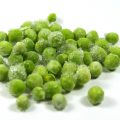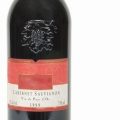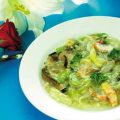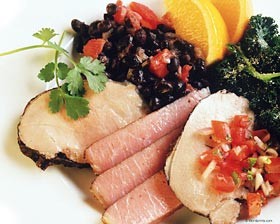 Italian dishesToday we will tell aboutTraditional culinary tastes of the inhabitants of the north of Italy, the Piedmont, Lombardy, Veneto and Emilia-Romagna regions. These areas are the richest in Italy. The streets of cities surprise with the uncommon purity of the country, the houses are well-groomed, people are calm, polite, independent, like solitude and unhurried conversation, and speak slower than in the south and do not yell for any reason. And the everyday cuisine here is the same solid, unsuitable, rich, satisfying. And the modern festive cuisine of the North is more refined than in the south and even in the center of the country, here, like in no other place in Italy, one can feel strong French influence. mean, extra weed will not be reported; so how can you call naked rice and corn porridge without butter a kitchen? And northerners say that southerners envy them, because they have to eat pizza all their lives. We will not delve into the causes of the eternal confrontation between the North and the South, but will only assure the reader that in Italy they cook delicious things everywhere - well, of course, stay away from those places where tourists walk in crowds.
Italian dishesToday we will tell aboutTraditional culinary tastes of the inhabitants of the north of Italy, the Piedmont, Lombardy, Veneto and Emilia-Romagna regions. These areas are the richest in Italy. The streets of cities surprise with the uncommon purity of the country, the houses are well-groomed, people are calm, polite, independent, like solitude and unhurried conversation, and speak slower than in the south and do not yell for any reason. And the everyday cuisine here is the same solid, unsuitable, rich, satisfying. And the modern festive cuisine of the North is more refined than in the south and even in the center of the country, here, like in no other place in Italy, one can feel strong French influence. mean, extra weed will not be reported; so how can you call naked rice and corn porridge without butter a kitchen? And northerners say that southerners envy them, because they have to eat pizza all their lives. We will not delve into the causes of the eternal confrontation between the North and the South, but will only assure the reader that in Italy they cook delicious things everywhere - well, of course, stay away from those places where tourists walk in crowds. Ham with the Royal BrandMany Italianregions and cities produce their own dry-cured ham – for example, Tuscany, Veneto, Umbria, Marche. But Parma is considered the best. It has been known since the time of the Roman emperors, and it was produced without interruption even in the most troubled times for Italy. Now the quality is controlled by the Parma Ham Association, a metal token with the association sign is inserted into each ham before salting, and after all the required operations and aging, the ham receives another sign – a brand with a crown and the word Parma. There were no special secrets under the ancient Romans, and there are none now. Three breeds of pigs are suitable for ham, grown only in Northern Italy, and each ham has its own number and the name of the region where the pig grew up. Real "prosciutto di Parma" is produced only in Emilia and the surrounding areas. "Real" ham is respected and will never be used to wrap veal, chicken fillet or quail, although wrapping with hams is traditional and widely used in the North. After curing, the ham is aged for 14 months to a year and a half. Unlike its Spanish competitor, Iberian jamon, Parma ham has a more ancient history and is more famous. After all, the path to jamon outside Spain was opened only a few years ago: the amount of bacteria in jamon exceeded EU standards. Unlike jamon, which is the harder the better, Parma ham is softer and can be cut with a regular knife. Jamon is dried high in the mountains, in ventilated barns, and if the ham is hung there, in a year and a half it will become jamon. Parma ham is dried on the plains, and during the aging process, each ham is checked by a taster, who periodically pierces the future Parma ham with a bone piercer and sniffs it, tastes the smell, and if something is wrong, rejects it.
Ham with the Royal BrandMany Italianregions and cities produce their own dry-cured ham – for example, Tuscany, Veneto, Umbria, Marche. But Parma is considered the best. It has been known since the time of the Roman emperors, and it was produced without interruption even in the most troubled times for Italy. Now the quality is controlled by the Parma Ham Association, a metal token with the association sign is inserted into each ham before salting, and after all the required operations and aging, the ham receives another sign – a brand with a crown and the word Parma. There were no special secrets under the ancient Romans, and there are none now. Three breeds of pigs are suitable for ham, grown only in Northern Italy, and each ham has its own number and the name of the region where the pig grew up. Real "prosciutto di Parma" is produced only in Emilia and the surrounding areas. "Real" ham is respected and will never be used to wrap veal, chicken fillet or quail, although wrapping with hams is traditional and widely used in the North. After curing, the ham is aged for 14 months to a year and a half. Unlike its Spanish competitor, Iberian jamon, Parma ham has a more ancient history and is more famous. After all, the path to jamon outside Spain was opened only a few years ago: the amount of bacteria in jamon exceeded EU standards. Unlike jamon, which is the harder the better, Parma ham is softer and can be cut with a regular knife. Jamon is dried high in the mountains, in ventilated barns, and if the ham is hung there, in a year and a half it will become jamon. Parma ham is dried on the plains, and during the aging process, each ham is checked by a taster, who periodically pierces the future Parma ham with a bone piercer and sniffs it, tastes the smell, and if something is wrong, rejects it.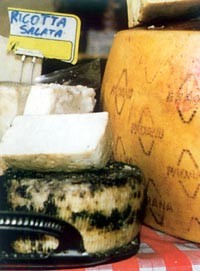 Runes are respected and safely forgotten by the ancientРиме коров не разводили. Для сыра использовали молоко овец, коз и свиней, а овечье сливочное масло считалось лекарством. Теперь свиное молоко благополучно забыто, а прямые потомки римских сыров – например, «Гран Падано» делают из коровьего молока.Знаменитый «Гран Падано» делают в Падуе, Тревизо, Венеции, Вероне и Виченце уже больше тысячи лет. Коровы, из молока которых делают этот сыр, пасутся на лучших пастбищах долины реки По. Сыр тщательно прессуется и потому сохраняется очень долго, до двух-трех лет. Да и выдерживают его тоже не меньше года. Особое уважение к этому сыру проявляется в том, что к нему в виде исключения заказывают белые вина – например, «Chardonnay Breganse» или «Sauvignon Colli Berici». Считается, что белые вина не так сильно «спорят» со вкусом уважаемого сыра.Долины, где производят сыр «Монтасио», находятся в холмистых районах Тревизо. Делают его только сто дней в году и только из молока тех коров, которые питались исключительно свежей травой. Сыры «Монтасио» по степени выдержки делятся на fresco (свежий, до двух месяцев), semistagionato (от 4 до 8 месяцев) и veccio (до года).«Montasio veccio» – один из самых выдержанных сыров Севера. Самая распространенная закуска с этим сыром называется «фрико» (тертый сыр, перемешанный с картофельным пюре).Технология производства «Монте Веронезе» не менялась с XIII века. Лучший из сыров этого типа делают в Вероне и выдерживают не меньше полугода. Считается, что «Монте Веронезе» восстанавливает силы после тяжелой физической или умственной работы. Жители Вероны любят его жарить и есть вместе с жареной ветчиной и артишоками, блюдо называется lonsa di maiale al monte Veronese.Подлинный пармезан «Parmigiano-Reggiano» (подробнее в статье «Пармезан – сырный король») исторически происходит из Пармы. Ну а битто – типичный сыр верхней Ломбардии, его здесь плавят так же, как это делают в находящейся за альпийскими хребтами Швейцарии.Блюдо людей, уставших от красотыСердце итальянского Севера – озеро Гарда. Жители Неаполя и Рима всегда стремились сюда, летом здесь пышная невыгорающая под солнцем зелень, легче найти приятную тень, и нет той жары, пыли и сутолоки, а зимой от холода спасают лечебные термальные воды. Пришедший в эти края с войсками Наполеона молодой Стендаль писал: «Я должен бы рассказать о ходе военных действий, но разве могу я говорить о таких низких вещах? Я попросил бы читателя хотя бы раз взглянуть на карту Гарды. Поросшие зеленью берега этого озера отражаются в спокойных водах и представляют собой пейзаж, возможно, один из красивейших в мире». Примерно в том же духе отзывались об озерах Ломбардии многие и до, и после Стендаля: Катулл, Петрарка, Данте, Габриеле Д’Аннунцио. Кому-то покажется странным, но именно в этом красивом и богатом краю больше, чем где бы то ни было в Италии, любят – крутую кашу из кукурузной крупы. Наверное, от красоты и достатка тоже можно устать.Полента появилась в Италии лет триста назад, когда, наконец, в Европе прижилась привезенная Колумбом кукуруза. Новая каша заменила описанный еще древнеримским гастрономом Апикусом пустой пирог из вареного теста, которым заедали мясные блюда. Кукурузная каша очень дешева, но на Севере ее едят и бедные и богатые, считается, что это здоровая и легкая еда. Обычно поленту используют как гарнир к мясным блюдам, но есть и более интересные сочетания, например, жареные зеленые помидоры в кляре из поленты.Супы придумали оккупантыМинестра в Италии – это супы любого вида или жидкие блюда с макаронами. Супы итальянцы недолюбливают, считается, что супы придуманы по бедности, чтобы скрыть недостаток еды, разбавив продукты водой. Во многих итальянских сказках крайний признак бедности – это похлебка из муки или кусочков теста. В древние золотые времена супов римляне и средневековые итальянцы вообще не знали, а в кулинарный обиход похлебки вошли только лишь пятьсот лет назад, когда раздробленную Италию захватывали и угнетали все кому не лень. Итальянцы как будто стесняются своих супов, и потому стараются подать к ним соусы из кедровых орехов или шалфея. И сейчас минестрой итальянцы вполне могут назвать тушенное в горшке мясо, так что не очень этому удивляйтесь.
Runes are respected and safely forgotten by the ancientРиме коров не разводили. Для сыра использовали молоко овец, коз и свиней, а овечье сливочное масло считалось лекарством. Теперь свиное молоко благополучно забыто, а прямые потомки римских сыров – например, «Гран Падано» делают из коровьего молока.Знаменитый «Гран Падано» делают в Падуе, Тревизо, Венеции, Вероне и Виченце уже больше тысячи лет. Коровы, из молока которых делают этот сыр, пасутся на лучших пастбищах долины реки По. Сыр тщательно прессуется и потому сохраняется очень долго, до двух-трех лет. Да и выдерживают его тоже не меньше года. Особое уважение к этому сыру проявляется в том, что к нему в виде исключения заказывают белые вина – например, «Chardonnay Breganse» или «Sauvignon Colli Berici». Считается, что белые вина не так сильно «спорят» со вкусом уважаемого сыра.Долины, где производят сыр «Монтасио», находятся в холмистых районах Тревизо. Делают его только сто дней в году и только из молока тех коров, которые питались исключительно свежей травой. Сыры «Монтасио» по степени выдержки делятся на fresco (свежий, до двух месяцев), semistagionato (от 4 до 8 месяцев) и veccio (до года).«Montasio veccio» – один из самых выдержанных сыров Севера. Самая распространенная закуска с этим сыром называется «фрико» (тертый сыр, перемешанный с картофельным пюре).Технология производства «Монте Веронезе» не менялась с XIII века. Лучший из сыров этого типа делают в Вероне и выдерживают не меньше полугода. Считается, что «Монте Веронезе» восстанавливает силы после тяжелой физической или умственной работы. Жители Вероны любят его жарить и есть вместе с жареной ветчиной и артишоками, блюдо называется lonsa di maiale al monte Veronese.Подлинный пармезан «Parmigiano-Reggiano» (подробнее в статье «Пармезан – сырный король») исторически происходит из Пармы. Ну а битто – типичный сыр верхней Ломбардии, его здесь плавят так же, как это делают в находящейся за альпийскими хребтами Швейцарии.Блюдо людей, уставших от красотыСердце итальянского Севера – озеро Гарда. Жители Неаполя и Рима всегда стремились сюда, летом здесь пышная невыгорающая под солнцем зелень, легче найти приятную тень, и нет той жары, пыли и сутолоки, а зимой от холода спасают лечебные термальные воды. Пришедший в эти края с войсками Наполеона молодой Стендаль писал: «Я должен бы рассказать о ходе военных действий, но разве могу я говорить о таких низких вещах? Я попросил бы читателя хотя бы раз взглянуть на карту Гарды. Поросшие зеленью берега этого озера отражаются в спокойных водах и представляют собой пейзаж, возможно, один из красивейших в мире». Примерно в том же духе отзывались об озерах Ломбардии многие и до, и после Стендаля: Катулл, Петрарка, Данте, Габриеле Д’Аннунцио. Кому-то покажется странным, но именно в этом красивом и богатом краю больше, чем где бы то ни было в Италии, любят – крутую кашу из кукурузной крупы. Наверное, от красоты и достатка тоже можно устать.Полента появилась в Италии лет триста назад, когда, наконец, в Европе прижилась привезенная Колумбом кукуруза. Новая каша заменила описанный еще древнеримским гастрономом Апикусом пустой пирог из вареного теста, которым заедали мясные блюда. Кукурузная каша очень дешева, но на Севере ее едят и бедные и богатые, считается, что это здоровая и легкая еда. Обычно поленту используют как гарнир к мясным блюдам, но есть и более интересные сочетания, например, жареные зеленые помидоры в кляре из поленты.Супы придумали оккупантыМинестра в Италии – это супы любого вида или жидкие блюда с макаронами. Супы итальянцы недолюбливают, считается, что супы придуманы по бедности, чтобы скрыть недостаток еды, разбавив продукты водой. Во многих итальянских сказках крайний признак бедности – это похлебка из муки или кусочков теста. В древние золотые времена супов римляне и средневековые итальянцы вообще не знали, а в кулинарный обиход похлебки вошли только лишь пятьсот лет назад, когда раздробленную Италию захватывали и угнетали все кому не лень. Итальянцы как будто стесняются своих супов, и потому стараются подать к ним соусы из кедровых орехов или шалфея. И сейчас минестрой итальянцы вполне могут назвать тушенное в горшке мясо, так что не очень этому удивляйтесь. Wine in the shade, grappa in the cold Italy is divided intotwenty wine regions. In the north, the largest producers are the regions of Piedmont and Veneto, the most famous wine here is the dry red "Valpolicella". It is made by combining Rondinella, Molinara, Corvina and other varieties in various proportions. The best brands of "Valpolicella" are aged for a year in oak barrels, and then the wine acquires a noticeable tannic flavor. "Chiaretto" from Lombardy is light and not too tart, among connoisseurs it is considered rustic, and so it is, but it is unlikely that anything better can be recommended for wild game or roast Alpine deer. "Franciacorta" is a more expensive wine than "Chiaretto", with complex fruity notes, it is recommended for calmer and more familiar dishes - for example, with roast veal, and it is better not to take "Chiaretto" with stewed venison. In Italy, it is believed that in the south they drink wine, and in the north - grappa. This opinion has not changed since ancient times, when grappa was drunk by hunters and lumberjacks in the foothills of the Alps, and they drank it only to warm up. And although now grappa is drunk both in the cold winter and in the hot summer throughout Italy and beyond, it is really made in the north. It is distilled from the waste products of wine production - pomace, skin, seeds, sticks or, as distillers say, from the pulp. Grappa is aged for no longer than a year in oak barrels or is not aged at all, and then it turns out very cheap. Restaurant rules: In the North, they have a hearty and long lunch, at least an hour, and have something light for dinner - salad, cheese, ham. Unlike Spain or Greece, an Italian would rather go without dinner than without lunch. That is why in many cities restaurants close early, sometimes even after nine. The rule common to all restaurants in the world is also observed in Italy: they cook deliciously and do not cheat, where there are many local visitors. If you want to eat a substantial, cheap and simple meal, go a little off the tourist route, go to a pizzeria or a cheap trattoria and get a large pizza or roast for 5-6 euros plus half a liter of white or red house wine for 3 euros - and you will get such a lunch that you will not need dinner.
Wine in the shade, grappa in the cold Italy is divided intotwenty wine regions. In the north, the largest producers are the regions of Piedmont and Veneto, the most famous wine here is the dry red "Valpolicella". It is made by combining Rondinella, Molinara, Corvina and other varieties in various proportions. The best brands of "Valpolicella" are aged for a year in oak barrels, and then the wine acquires a noticeable tannic flavor. "Chiaretto" from Lombardy is light and not too tart, among connoisseurs it is considered rustic, and so it is, but it is unlikely that anything better can be recommended for wild game or roast Alpine deer. "Franciacorta" is a more expensive wine than "Chiaretto", with complex fruity notes, it is recommended for calmer and more familiar dishes - for example, with roast veal, and it is better not to take "Chiaretto" with stewed venison. In Italy, it is believed that in the south they drink wine, and in the north - grappa. This opinion has not changed since ancient times, when grappa was drunk by hunters and lumberjacks in the foothills of the Alps, and they drank it only to warm up. And although now grappa is drunk both in the cold winter and in the hot summer throughout Italy and beyond, it is really made in the north. It is distilled from the waste products of wine production - pomace, skin, seeds, sticks or, as distillers say, from the pulp. Grappa is aged for no longer than a year in oak barrels or is not aged at all, and then it turns out very cheap. Restaurant rules: In the North, they have a hearty and long lunch, at least an hour, and have something light for dinner - salad, cheese, ham. Unlike Spain or Greece, an Italian would rather go without dinner than without lunch. That is why in many cities restaurants close early, sometimes even after nine. The rule common to all restaurants in the world is also observed in Italy: they cook deliciously and do not cheat, where there are many local visitors. If you want to eat a substantial, cheap and simple meal, go a little off the tourist route, go to a pizzeria or a cheap trattoria and get a large pizza or roast for 5-6 euros plus half a liter of white or red house wine for 3 euros - and you will get such a lunch that you will not need dinner.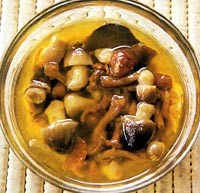 Young (“homemade”) wines are best drunk where they are produced, because even with short transportation, their quality is noticeably deteriorating. What else do they eat in the North:
Young (“homemade”) wines are best drunk where they are produced, because even with short transportation, their quality is noticeably deteriorating. What else do they eat in the North:
- risotto – rice cooked in water or broth;recipes are endless, each cook prepares risotto in his own way - with smoked basturma, capsicum, tomatoes, cauliflower, celery, quail, sausages, mussels, spizula, oysters, crabs, shrimps. For some reason, real risotto can only be prepared in Italy, just like pilaf in Asia and paella in Spain;
- quail in wine sauce with polenta;
- larks in dough with pecorino cheese;
- artichokes carciofi alia diugia, cooked in a special recipe from Venice, from the Jewish district of Gheto;
- spiedo is the most delicious of the Lombard dishes –assorted meats on a spit: a piece of pork, rabbit, chicken, sprinkled with rosemary, plus for the bitterness beloved by the Lombards, a small field bird such as a lark, bunting, wild quail;
- pickled alpine mushrooms, which are collected in late autumn - ringed caps;
- stewed venison, hunter's style, which is stewed for a very long time and without any additives.





